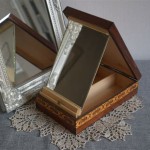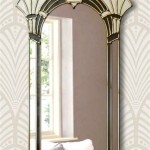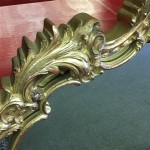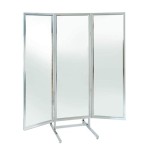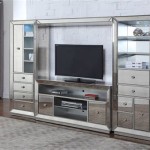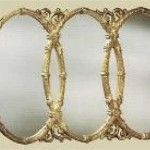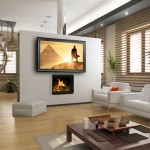What Is a Two-Way Mirror and How Does It Work?
A two-way mirror, also known as a one-way mirror, is a specialized type of mirror that appears to be reflective on one side but transparent on the other. This seemingly paradoxical phenomenon has fascinated people for centuries and has found its way into both science fiction and real-world applications. The secret behind this intriguing optical illusion lies in the interplay of reflectivity and transparency, achieved through a carefully controlled process of silvering.
Unlike standard mirrors that are fully reflective, two-way mirrors are coated with a thin layer of silver or another highly reflective material. This layer, however, is not completely opaque, allowing a small amount of light to pass through. The key to the two-way effect lies in the difference in lighting conditions on either side of the mirror.
The Science Behind the Illusion
The principle behind the two-way mirror's operation is based on the concept of light reflection and transmission. When light strikes a surface, it can be reflected, absorbed, or transmitted through the surface. The proportion of light that follows each path depends on the material and the wavelength of the light.
In a two-way mirror, the silver coating is designed to reflect most of the light that strikes it from one side, creating a reflective surface. However, a small percentage of light is transmitted through the coating. The amount of light transmitted depends on the thickness and density of the silver coating. When viewed from the bright side, the reflected light dominates, making the mirror appear reflective. But when viewed from the dark side, the transmitted light becomes more prominent, allowing the observer to see through the mirror.
Imagine a room with a two-way mirror separating it from a dimly lit hallway. When an individual stands in the room and looks at the mirror, they see their reflection because the light from the room is strong enough to overwhelm the small amount of light transmitted through the mirror. However, an observer in the hallway can see through the mirror into the room because the light in the hallway is much weaker, making the transmitted light more visible.
Applications of Two-Way Mirrors
Two-way mirrors have a wide range of applications, both in scientific settings and everyday life. Their unique properties have made them invaluable tools for various fields:
1. Surveillance and Security
One of the most common uses of two-way mirrors is in surveillance and security applications. Police interrogation rooms often employ two-way mirrors to allow detectives to observe and record suspects without being seen. Similarly, retail stores may use these mirrors to monitor customers and deter theft. Security personnel can observe activities in a specific area without being directly visible to the people being monitored.
2. Research and Observation
Two-way mirrors are also used extensively in scientific research and observation. They are crucial in psychological experiments, allowing researchers to observe subjects' behavior without influencing their actions. In medical settings, they are used to monitor patients in critical care units, providing a discreet way to assess their condition. Behavioral studies also use these mirrors to observe animal behavior in controlled environments.
3. Entertainment and Illusion
Two-way mirrors play an important role in creating illusions and special effects in various forms of entertainment. Magic shows and escape acts often incorporate these mirrors to amaze audiences with seemingly impossible feats. They are also used in theater productions and movie sets to create immersive experiences and add a layer of intrigue. In television studios, two-way mirrors can be used to create the illusion of a live audience, allowing viewers to feel like they are part of the action.
Factors Affecting Two-Way Mirror Performance
The effectiveness of a two-way mirror depends on various factors, including the reflectivity of the silver coating, the thickness of the coating, and the difference in lighting conditions on either side of the mirror. A thicker and more reflective silver coating will result in a higher reflectivity and less transparency. Similarly, a larger difference in lighting conditions will enhance the two-way effect.
In addition, the wavelength of light can also influence the performance of a two-way mirror. The silver coating is designed to reflect visible light, but it may not be as effective at reflecting other wavelengths, such as infrared or ultraviolet light. This can affect the visibility through the mirror under different lighting conditions.
When choosing a two-way mirror, understanding the specific application and the desired level of reflectivity and transparency is crucial. Carefully considering these factors ensures that the mirror meets the intended purpose and provides the desired level of effectiveness.

Two Way Mirror Mirrorworld

How A Two Way Mirror Works

How Do Two Way Mirrors Work It Works Mirror Decor

How Does A Two Way Mirror Work

Buyer S Guide Selecting The Best Mirror For Your Observation Room Two Way Mirrors

How Mirrors Work And To Test Two Way Glass The Horizon Sun

How To Tell If A Mirror Is Two Way Or Not 8 Steps With Pictures

How Does A Two Way Mirror Work Big Questions Ep 24

How Acrylic Two Way Mirror Works Mirrors

Two Way Mirror

